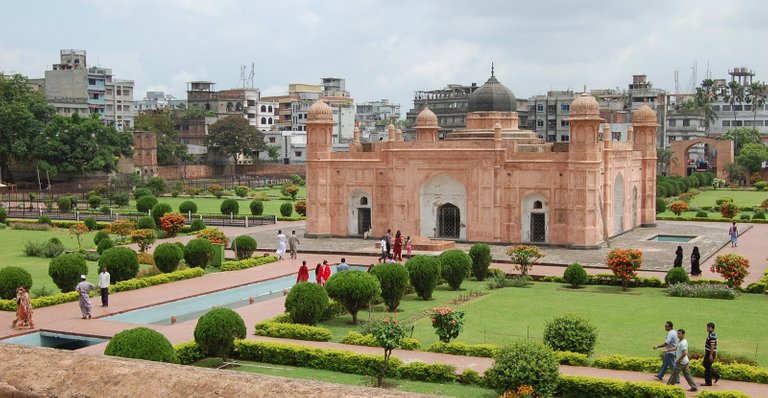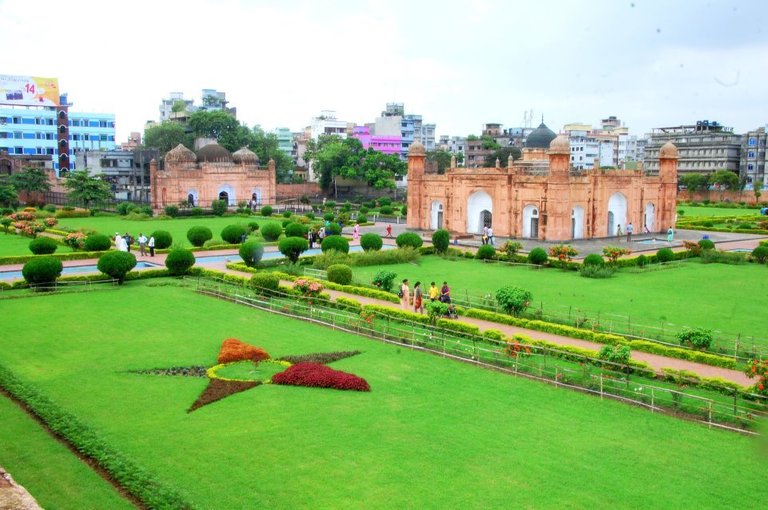
The name of this fort was first known as Kella Aurangabad. And this fort was designed by Shah Azam. Azam Shah, the 3rd son of the Mughal emperor Aurangzeb, started the construction of the fort as subdue of Dhaka's subadar in 1678 AD. Just a year later, before the completion of the fort, the emperor Aurangzeb sent him to Delhi to suppress the Maratha insurgency. After the construction of a mosque and durbar hall, the construction of the fort was stopped. Nawab Shaista Khan came to Dhaka in 1680 and again started the construction of the fort. However, after the death of Shaista Khan's daughter, Paribah Bibi, this fort was considered to be inadequate and Shaista Khan stopped construction of it in 1684 AD. This was the marriage of Prince Eli Shah with Prince Eli. Fairy Bibi is buried in the middle of the Darbar Hall and the mosque. Shaista Khan sat in the court while sitting in the court. Ownership of the fort during the departure of Agra to Shaista Khan in 1688 Give donations to heirs. After Shaista Khan left Dhaka, the importance of Lalbagh fort was reduced due to various reasons. In 1844 a semi-government institution called Dhaka Committee started the development work of the fort. During this time the fort was known as Lalbagh fort. In 1910, the wall of Lalbagh fort was brought under the Department of Archeology as a protected architecture.
.jpg)
Finally, 300 years after the construction of the Lalbagh fort in the last decade of the last century, the earliest forms were redone and opened to the visitors. Paribibi's tomb is very significant in the area. This is an excellent example of the Mughal period. Lalbagh fort is located in a spacious area. There are three structures in the premises of the fort: Get started During this time the fort was known as Lalbagh fort. In 1910, the wall of Lalbagh fort was brought under the Department of Archeology as a protected architecture. Finally, 300 years after the construction of the Lalbagh fort in the last decade of the last century, the earliest forms were redone and opened to the visitors. Paribibi's tomb is very significant in the area. This is an excellent example of the Mughal period. Lalbagh fort is located in a spacious area. There are three structures in the premises of the fort: Get started During this time the fort was known as Lalbagh fort. In 1910, the wall of Lalbagh fort was brought under the Department of Archeology as a protected architecture.

Finally, 300 years after the construction of the Lalbagh fort in the last decade of the last century, the earliest forms were redone and opened to the visitors. Paribibi's tomb is very significant in the area. This is an excellent example of the Mughal period. Lalbagh fort is located in a spacious area. There are three structures in the premises of the fort: An excellent example of the Mughal period. Lalbagh fort is located in a spacious area. There are three structures in the premises of the fort: An excellent example of the Mughal period. Lalbagh fort is located in a spacious area. There are three structures in the premises of the fort:
Durbar Hall and Hammam Khana in the center
Paribibi Tomb
Shahi Mosque of the northwest
There are also gates on the south-eastern side of the lovely gates, and on the roof of the south wall. It is now closed on Sundays and half day on Monday. This fort is open to visitors for the remaining six days of the week.
This is history right here. Wonderful pictures. Must be a tourist attraction.
thanx bro